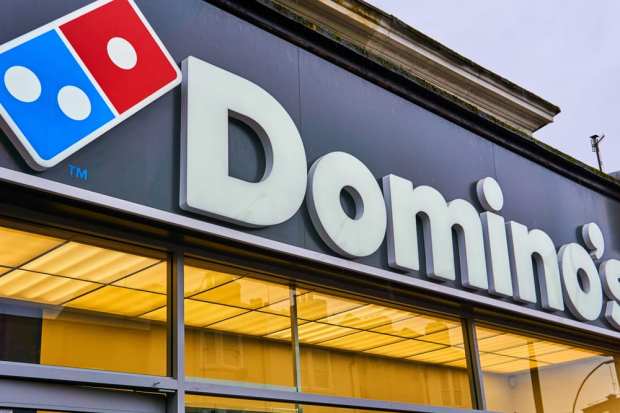Domino’s Looks To AI, Loyalty And ‘Fortressing’ For More Growth

Loyalty stood as one of the big themes of the 2018 fourth quarter for Domino’s Pizza.
Not only did the chain’s Piece of the Pie loyalty program contribute “meaningfully to our traffic gains” during the period, according to CFO Jeff Lawrence, that program is now being fortified by artificial technology — a move that demonstrates the technological progress being made in the QSR world.
Domino’s in recent years has stood out among QSR operations by employing marketing gimmicks and mobile technology to gain PR and win over consumers. Consider, for instance, its effort to fix potholes in U.S. cities (the PYMNTS New Orleans bureau can attest to the longing among residents here for such attention from the pizza chain, given the generally poor condition of local streets).
AI Loyalty
Now get ready for AI-based ordering, an idea that Domino’s executives touted on Thursday (Feb. 21) during the company’s Q4 post earnings conference call with investors.
The program, previously reported by PYMNTS, offers members of its Points for Pies rewards program a chance to earn points without having to buy a pizza from the chain — but in a way designed to tie consumers more tightly to the chain’s mobile ecosystem.
To receive the promotion, diners download the QSR’s app and sign up for its rewards program. They can then use a “newly embedded pizza identification feature to scan their pizza” and earn 10 points from the company. Customers then redeem 60 points for a medium two-topping pizza at the restaurant chain. To make the promotion possible, the company’s digital analytics team made a tool using artificial intelligence (AI) that can spot a pizza in a photo.
The program is so new that executives during the call could offer no further specifics, but they certainly strove to stir up enthusiasm about the prospects of using AI to order pizza. “It is one more example of how we do things a bit differently, always trying to stay ahead on how we make news — generate brand engagement and, in this case, grow awareness and participation in our loyalty program” said Rich Allison, president and CEO, during the Thursday call.
Since its launch about three years ago, the chain’s loyalty program has grown to some 20 million users, Allison said, and “has been a meaningful driver of sales performance and frequency over time. Our approach (is) to continue to bring more news and to bring more interesting ways for consumers to sign on with our program and get actively involved in it.”
“Fortressing” Plan
Domino’s executives also said they would keep the chain’s so-called “fortressing” program, which refers to the push to expand rapidly in order to decrease delivery times — more stores mean smaller distances between pizza ovens and consumers.
“The real game changer over time, on labor, is going to have to come from our efforts to fortress our markets,” Allison said during the call. “The most expensive thing that we do is take a pizza from point A to point B. In addition to driving incremental sales for household, which we’ve talked about in the past, we are also looking to reduce the cost per delivery.”
That “fortressing” push, he said, comes as “we see wages rising in cities around the country. This is the key lever over the coming years in terms of reducing [those] delivery costs.” Achieving that goal also means “being smarter about our scheduling and … using technology to make the flow of product from the store out to the customer more efficient.”
Domino’s Misses
Domino’s did not break down its technology or eCommerce-related spending for the fourth quarter of 2018, but did report that it spent $120 million in capital expenditures for the full year of 2018. “We continue to invest in our supply chain to keep up with our rapid growth, including opening our New Jersey Center in Q4 and starting work on two additional supply chain centers, one in South Carolina and one in Texas,” Lawrence said. “We also continue to invest in our technology capabilities.”
For Q4, Domino’s reported total revenue of $190.6 million, up 21.4 percent year over year. Same-store sales increased 5.6 percent year over year in the fourth quarter. That was below analysts’ expectations of 6.9 percent, and reportedly a reason for a post-earnings stock decline for the chain. Net income for Q4 increased 19.6 percent year over year to $18.3 million. Earnings per share came in at $2.62, compared to the $2.69 expected by analysts.
Still, the company said it will continue to add stores – the chain added a net 125 U.S. locations in Q4 – as it strives to boost its loyalty program throughout the rest of 2019.
